
Dogs in season: Your guide to the dog heat cycle

Philippa Short
29 September 2022 | 8 minutes read
Experiencing your female canine’s first season can be a bit intimidating when you don’t know what to expect.
But there’s no need to worry when you have expert dog behaviourist Philippa Short to guide you through the process. From the signs and symptoms to easing your pup’s discomfort, here’s what you need to know about the dog heat cycle.
- Do dogs get periods?
> When do dogs get their first period?
> How long do dog periods last - Signs a dog is coming into their first season
> Other common symptoms and behaviours of a female dog in heat - The dog heat cycle
> How long does a dog stay in heat?
> How often do dogs come into season? - Training and caring for your dog in heat
> What to do if a male dog mounts your female dog in heat
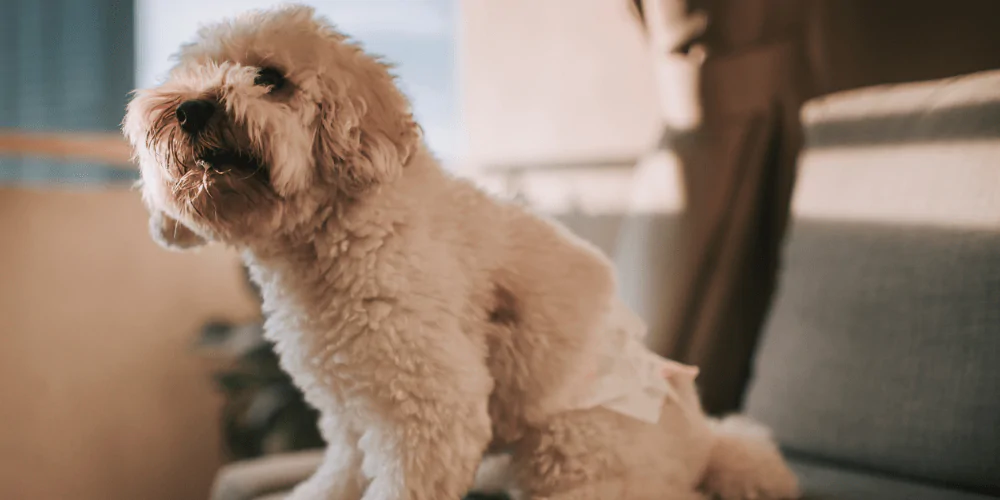
Do dogs get periods?
Yes, dogs do get periods – though it’s not the same kind of period that we humans experience.
Female pups have their own unique heat cycle (which is known as being ‘in heat’ or ‘coming into season’). It’s during this time that your pooch becomes fertile and can get pregnant.
> When do dogs get their first period?
Female dogs reach sexual maturity (and so get their first period) at different times. A dog’s first season can start anytime from six to 24 months old, and smaller breeds mature more quickly than bigger ones.
There has been the odd occasion when a smaller breed has come into heat at five months old, but this isn’t the norm.
Most dogs will come into season before their first birthday – but don’t panic if it happens later than this. Dogs are individuals and so will differ in how long they take to mature.
Try speaking to your breeder as sexual maturity timing can be passed down genetically from the mum. Households with multiple females can also come into season together if they share attention from the same male dog.
If your female pup reaches 16 months without having a season, it’s worthwhile reaching out to your vet. They can see if there’s an underlying medical problem causing the delay.
> How long do dog periods last
How long a dog’s period last depends on the individual pup and whether they have a cycle once or twice a year. Bleeding can last anywhere between three and 21 days – but more on that later.
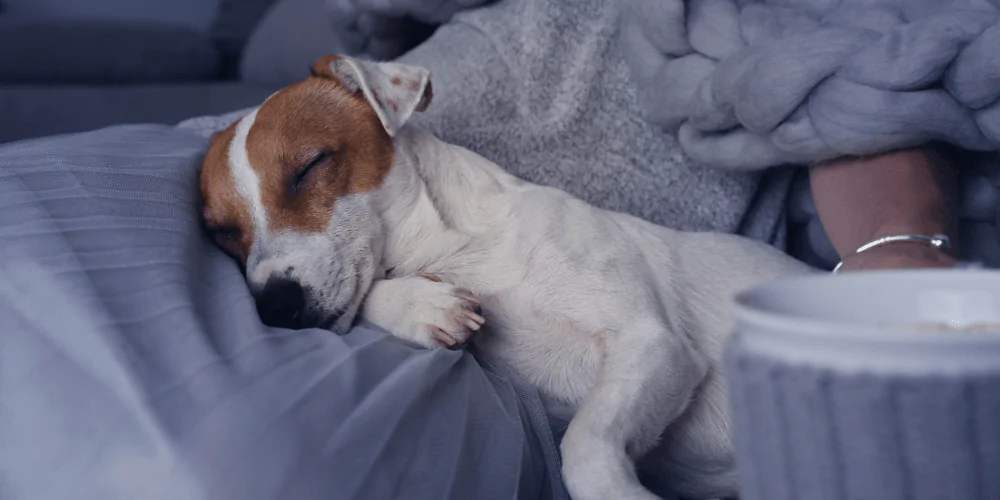
Signs a dog is coming into their first season
So, how do you know when your puppy is coming into their very first season?
Although you can’t single out the exact day, a rise in your dog’s hormones creates some telltale behavioural signs. She could become:
- Stroppy or uncooperative
- Flighty and easily spooked
- Socially inept, being over appeasing and getting up in other dogs’ faces (even if she was a good social greeter before)
- Keen to avoid other dogs and/or you
- Clingy and desperate to be around you
Keep in mind that your pooch can also be very up and down when in heat. She may switch between different emotions and behaviours from day to day. Simply accept that she is emotional and allow her to go through those emotions as needed.
It’s also very normal for your pup’s eating habits to change. Depending on her hormones and what she’s doing that day, she may go off her food or want to eat everything.
So don’t worry if she starts picking at dinner or refusing meals. You may find dry dog food doesn’t cut it and need to spruce up meals with other things.
She may also feel a bit queasy during her first week in heat, meaning the occasional small upchuck can happen. But if she’s going off her food for more than five days (or has regular vomit and/or diarrhoea), speak to a vet.
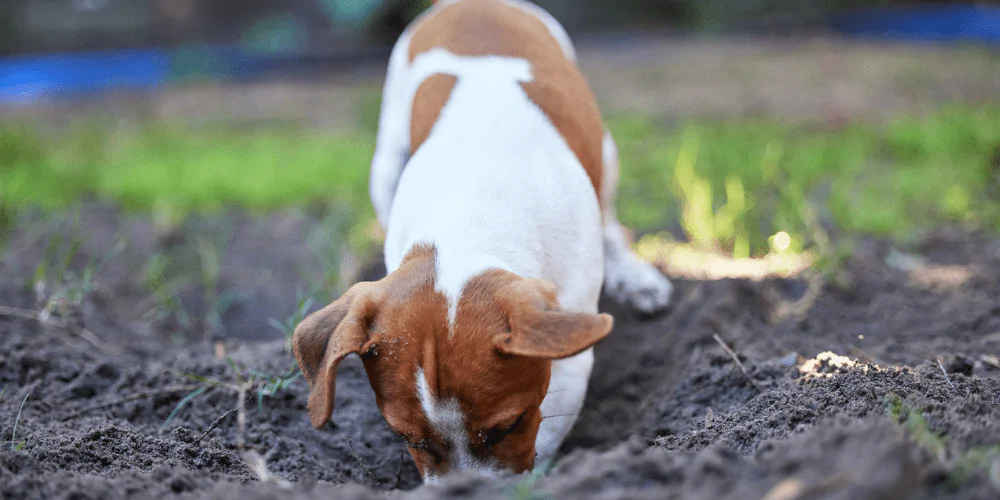
> Other common symptoms and behaviours of a female dog in heat
- Discomfort from stomach and back pain
- Panting (from stomach pain or being too hot)
- Digging as a pre-nesting behaviour (if they think they’ve been mated with)
- Bickering or fighting with other females
Negative behaviour between several female dogs in the house needs to be carefully managed. Although this behaviour tends to only happen in heat, allowing fighting can affect their relationship in the long term. If you’re ever worried that negative behaviour is starting to escalate and don’t know how to handle things, speak to a professional.
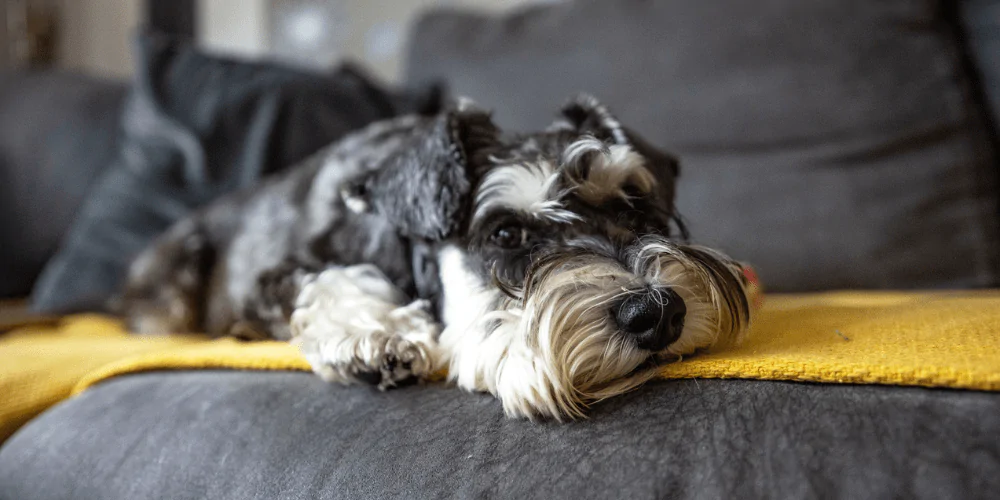
The dog heat cycle
> How long does a dog stay in heat?
A dog can stay in heat anywhere from two to 30 days. The season begins at the first sign of bleeding. It then ends when your pup loses interest in mating and her vulva goes down in size.
Let’s take a closer look at how the dog heat cycle works.
The first few days
- Your dog’s vulva begins to swell with blood
- You might start to see drops of blood around the floor
Days five to nine
- Your dog’s vulva is completely swollen
- They are fully bleeding instead of spotting – the heaviness of the bleeding varies from dog to dog, but her first season can be lighter
- Your pup will start attracting male attention, but she’s not ready to mate yet
- She may sit down a lot and guard her rear end
Days nine to 15
- Bleeding turns into a light, watery discharge
- Your pooch is now ovulating and ready to accept males
- She could be very sexually charged as her body is telling her she needs to mate
- Your pup may reverse up to you (and inanimate objects) with her tail swung to the side – yep, this includes humping
- Be careful to check any fencing is secure and to not let her off the lead when out and about
Days 21 to 30
- You can tell the season is coming to an end as your pup stops being sexually charged
- Her vulva decreases in size and goes back to normal
> How often do dogs come into season?
A female pooch comes into season roughly every 5 to 7 months, though some may only cycle once a year. This could happen to any pup but can be more common with certain breeds like Basenjis and Beagles.
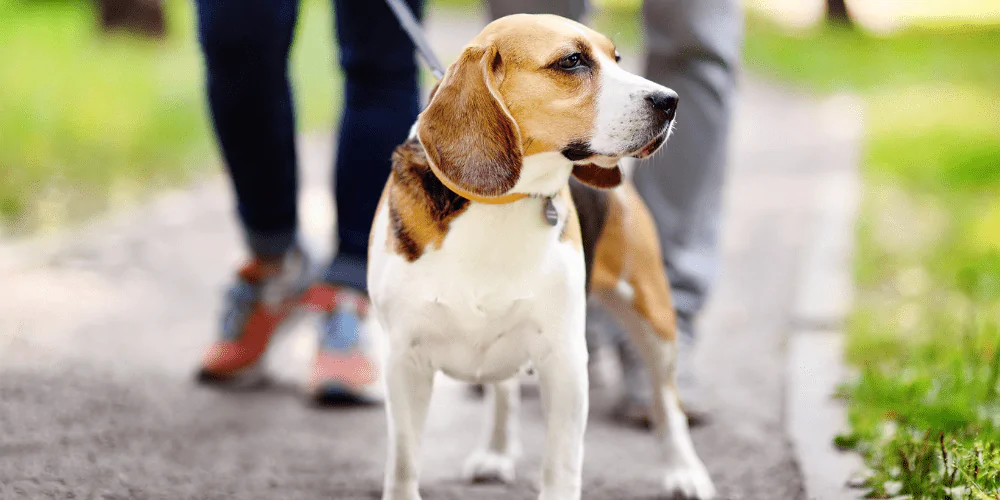
Training and caring for your dog in heat
A gentle approach needs to be taken if you’re looking to do some training with your canine while she’s in season.
- Always be looking at your pup’s emotions and whether she’s up for training.
- Remember that she will have an enlarged vulva, so she may choose not to practice ‘sit’ often or for long periods of time.
- If she doesn’t want to train and just wants to cuddle or have her own space, don’t push her. Forcing training could make her resentful and start to lose motivation.
Keep in mind that when your pup is in the ‘looking to mate’ stage of heat, she will be tricky to handle. If she can scale a fence to get to a male dog, she will try it. Use a long lead if you’re in an area where she could escape.
Although it’s not illegal to walk your female pup while in season, it’s safer to book a solo slot session in a secure dog park with high fences.
You can also give your canine lots of enrichment at home by stuffing Kongs, hiding treats, and using mental games like puzzles.
Give your pooch a good shampoo bath at the end of her heat cycle to clean off her seasonal odour. You may need two or three cleans to make sure there aren’t any smells left around her bloomers and back legs.
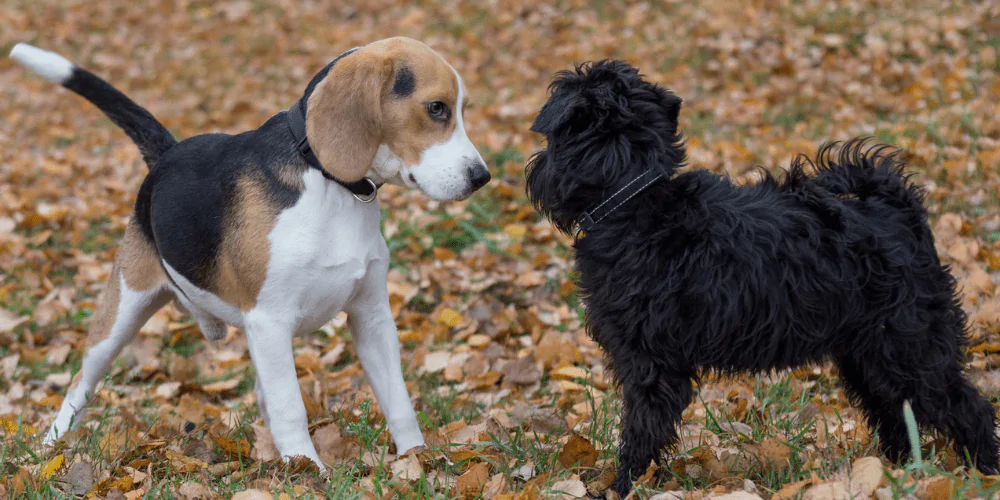
> What to do if a male dog mounts your female dog in heat
If a male dog latches onto your pup and starts humping, the most important thing is to not try and pull them apart.
This is because male dogs have a gland in their penis which swells to lock them inside the female. They then rotate to face the opposite direction, causing the dogs to be stuck bottom to bottom.
By trying to separate them in this position, you could tear both pooches and cause serious injuries. And even the gentlest of male dogs will react if you try and pull them off when they’re mounting.
Instead:
- Quietly hold your pup still and allow the mating to happen
- Give her cuddles and praise to show support and help keep her calm
- Keep in mind that mating dogs can be tied together anywhere from five to 50 minutes
- Once both dogs have fully separated, take your pup straight to the vet – they’ll talk you through options like the anti-mate injection
Remember to be a supportive pet parent when your dog is in heat. She’s going through a mentally and physically challenging time, so always be mindful and let her lead you on what she needs.
Give your female pup the freedom to live her best life, even through those tricky heat cycles! Choose flexible cover with Petsure dog insurance.


